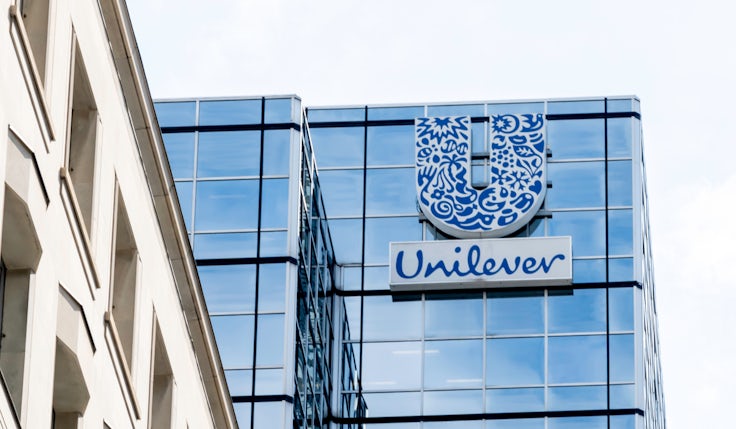Unilever must learn you can’t outsource trust to influencers
The FMCG giant’s influencer-led strategy risks depleting trust in its brands, under the wrongheaded assumption that brand communications are “suspicious”.

“Brands,” explained Fernando Fernandez, CEO of Unilever, a corporation that owns over 400 brands worldwide, “are by default suspicious”.
It wasn’t quite a Gerald Ratner moment, but it came perilously close – one of those instances where candour flirts with catastrophe, even if you haven’t actually used the word ‘crap’ about one of your own products.
The setting was a fireside chat with an investment analyst earlier this month, where Fernandez – newly installed in the top role – laid out his vision for reviving the stolid but unexciting multinational’s fortunes. After doubling down on his theme with the observation that “messages from brands coming from corporations are suspicious messages”, he went on to reveal a trenchant influencer strategy, in which “others can speak for the brand at scale”.
I don’t know how the investor audience took this subversion of the tenets of brand building, where trust is the foundation for everything, but I know that if I’d been sitting by that fire, I’d have registered two points of contention: the diagnosis and the cure. Let’s chat them through in that order.
‘Brands are by default suspicious’: Unilever’s new CEO identifies influencer marketing as key pillar of strategy
What is a brand for?
Unilever’s roots are long enough to take us right back to the origins of branding – to a time when people were cheated by shifting and unaccountable traders with a repertoire of dirty tricks. Chalk was added to flour, water to butter and sand to sugar, along with routine deception at the scales.
The original role of brands was to badge daily commodities with enduring names and designs as a reassurance of quality and fairness. Lever Brothers’ Sunlight soap was one. The point was simple: the manufacturer invested in the enduring entity, so it had something to lose if consumers were let down. This supply-side vulnerability was the basis of consumer trust.
Brands have come a long way since then, with the addition of positive associations and creative desire triggers, to the extent that we can forget that trust is their defining role. We shouldn’t.
According to a 2023 Edelman report, trust remains a top-three driver of brand choice. And its effect is growing, not shrinking. Fully 71% agreed with the statement that ‘it is more important to trust the brands I buy today than in the past’. This was highest among Gen Z consumers.
The original role of brands was to badge daily commodities with enduring names and designs as a reassurance of quality and fairness.
In the over-the-counter healthcare sectors I sometimes work in, there are brands whose levels of trust are so high that they exert an observable placebo effect even before the medication is taken.
This is not to deny that consumers are intelligently sceptical about brand claims in an increasingly commercial world – and you’d want them to be, if only to guard against ill-founded boasts your competitors might make.
But the point of good branding is to rise above the doubt through consistency – not just of messaging but of the offer itself – and to invest, and be seen to invest, in the totality of that enduring brand entity.
If we take Fernandez at his word, he seeks to put up the white flag in the struggle to overcome consumer cynicism and instead outsource all the good things his brands should mean and stand for to an external, atomised population. What are his chances of success?
Trust in advertising increases, driven by young people
The lures and limits of influencers
There is nothing new about the effect of word of mouth as a driver of consumption decisions. In 1954, the US social scientist William H Whyte demonstrated that the distribution of air conditioning brands in a Philadelphia suburb could only be explained by conversations “over the clothes lines and across backyard fences”.
It used to be commonly observed about word of mouth that, for all its power to persuade, it was the one medium you could not buy. Well, now you can. Kind of.
Today’s influencers don’t lean over backyard fences but lean into billions-strong social media networks. In truth, though, they are not disinterested commentators when speaking up for brands. They are a hybrid medium. Their word of mouth has been acquired for a fee. For both the influencer and the brand putting up the funds, it is a delicate balance to strike.
A 2022 Harvard Business Review study into the likelihood of sponsored influencer content being widely shared drew conclusions we might all have reached intuitively. The more the influencer was able to frame the brand content in their own way, on their own terms, the more it was accepted, viewed and shared.
In the short term, that seems fine. In the longer term, across many thousands of influencers, all interpreting the brand as they see fit, the result must be the erosion of brand consistency. And from that point, erosion of trust will follow.
And that’s when things are going well. But throw a brand crisis into the mix – a product recall, a sabotage, a pollution event – and your influencers are scant use to you now. This is a time when the brand needs to speak and act as one – but with brand teams unpractised in the arts of direct communication, and fearful of putting out ‘suspicious’ messaging by default, the chances for a redemptive solution are reduced.
In any case, there is an irony in Fernandez nursing an infatuation with the influencer crowd. How have they won their status in the first place? Well, they take great care to understand their discrete audience segment. They work hard at producing and improving their product – the bespoke content they create. And they stay consistently within the bounds of the expertise they have developed and are known for.
Remind you of anything? This is what brands do. Because influencers are microbrands. If they, as individuals, can accomplish the basics of branding on modest resources, why can’t Unilever’s brand teams continue to do that and more with the fortunes at their disposal?
Unilever’s $35bn asset
Meanwhile, take a look at the Unilever corporate website and you’ll see that it’s all business as usual. On its ‘At a glance’ page, the company takes pride in celebrating its “iconic portfolio of brands”. And not without justification: the experts in brand valuation, Brand Finance, estimate the total value of Unilever’s brands at $35bn. That’s the valuation of the brand assets alone; nothing else.
That is one hell of a collective asset with which to encumber the epithet ‘suspicious’, and for which to determine that, from here on, only outsiders should be spokespeople.
If Fernandez ends up putting a dent in that valuation through intemperate language and an uncompromising ‘others speak’ strategy, then future investor chats will become a lot less cosy and agreeable: out of the fireside chair and into the fire.







